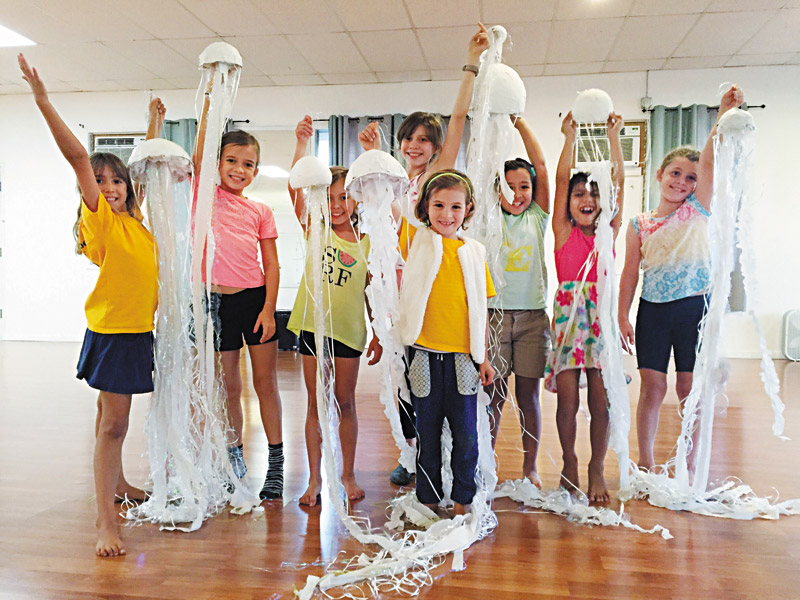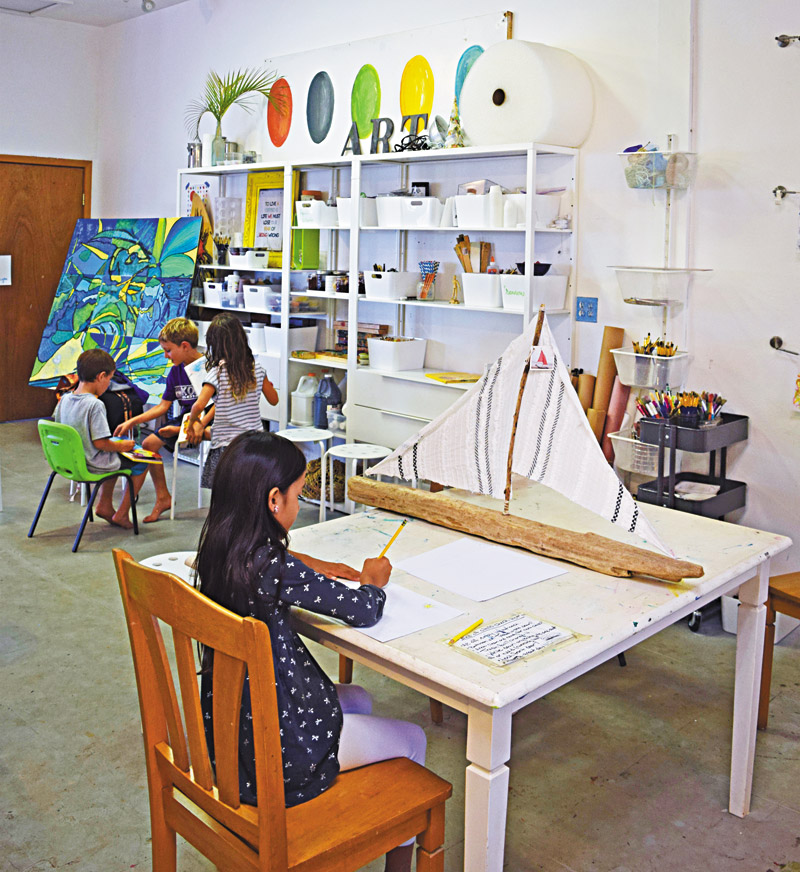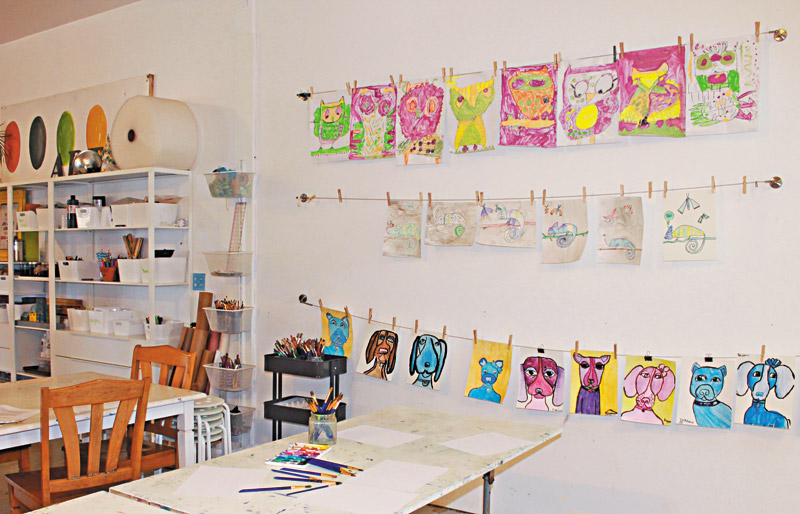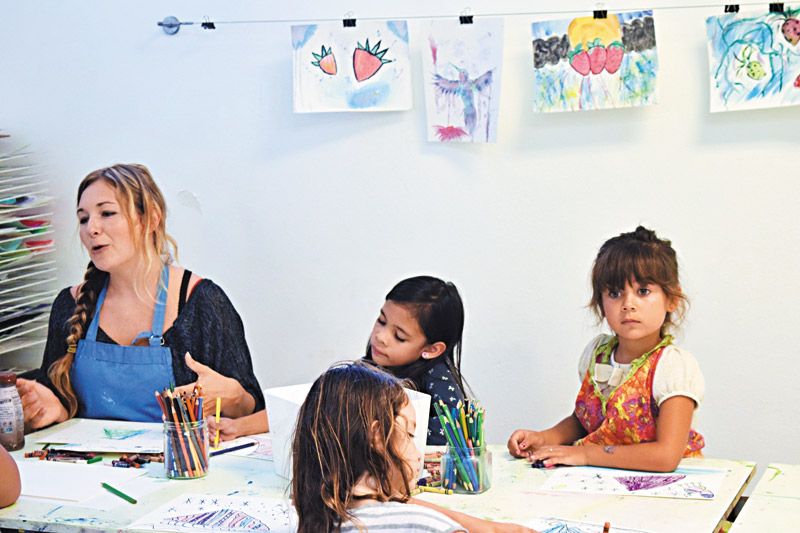There Is No Must In Art Because Art Is Free
Stepping into Kauai Underground Artists (KUGA) Visual Arts Studio makes you want to pick up a pencil and draw. The walls are lined with a colorful explosion of artistic tools that await visionary hands, and creativity clearly abounds, as evidenced in the numerous paintings left hanging to dry. Wise pink owls, contemplative blue chameleons and happy purple dogs are just a sample of the painted treasures adorning on the walls — and are among the myriad artistic pieces crafted by keiki since the studio opened in 2012. “We strive and love to see creativity flourish,” says Kristy Maligro, one of the studio’s founders.
Maligro had tasked her students with composing a dog’s face using mixed media, she says, referring to the multicolored canine faces on display. The students in the class, ages approximately 5 to 10, were given guidelines for constructing the facial features, such as eyes, ears and nose, and they learned how to express varying emotions using different angles and lines. The fun colors resulted from using hues on opposite sides of the color wheel — thus, several purple dogs with happy faces on yellow backgrounds. “We try to lay foundational skills in elements of art,” says Maligro. “But that’s just the launching board.
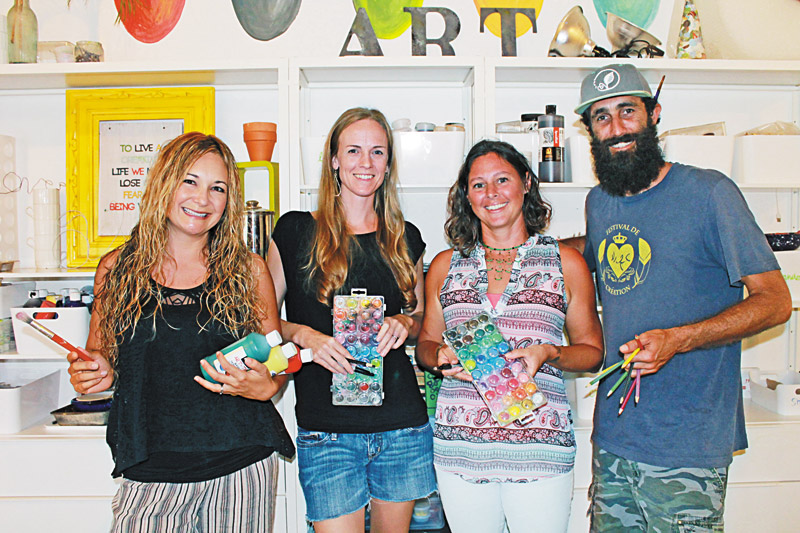
Experienced artists and teachers (from left) Tyme Ventura, Kristy Maligro, Shannan Morgan and Seth Womble love inspiring keiki to create art (COCO ZICKOS PHOTO)
“We strive to lead classes that do not result simply in cookie-cutter arts and crafts projects, but where the student is encouraged to think outside the box and stretch their imaginations.”
It’s acceptable — in fact, encouraged — for keiki to “draw outside the lines” in the Kalaheo workshop.
“Art doesn’t have to look a certain way to look right,” says Maligro, who often gathers inspiration from modern artists and applies similar techniques in her classes. “This is a place for experimentation.”
Stifling creativity is the last thing the studio’s small group of teachers, all experienced artists, want to do, and they take pride in having untraditional classrooms “where art is messy and messy is fun,” says instructor Tyme Ventura, “where there’s no perfect, and they get to think outside of the box and just make something their own and create a story with their lines and their shapes.”
Ventura recently had her students, ages 5 to 7, paint owls of different shapes and personality traits using a triadic color scheme (hues that form a triangle on the color wheel), with an added “pop” of color like neon green “for them to have fun with,” she says.
Another studio teacher, Seth Womble, a professional muralist, enjoys preparing structured plans for his classes and, like the other instructors, thinks outside the box by asking the kids what they’d like to do, as well. “I try to mix the two together so they feel like they have input on the project for the day,” he says. Then he helps them explore their talent and allows them the space to make their own creative mark.
Shannan Morgan, who also founded the studio, follows a similar process and lets her students run with their imaginations. She recently gave her group, ages 10 to 14, a project that had them use a wet tea bag to provide an extra layer of color to their abstract acrylic paintings.
Art classes like these are offered throughout the year and run once a week in eight-week sessions. Courses are typically in the drawing and painting categories, and introduce keiki to media including pencil, charcoal, oil and pastels. Yet, kids also can enroll in mixed-media courses that include techniques such as sculpture and typography. New skills always are added to the learning mix, including an upcoming printmaking class, made possible by a grant through Poipu Rotary Club. All ages are welcome, and high school and adult classes also are offered, as well as a regular ladies’ art night.
Lack of funding for the arts in public schools makes these courses all that much more important for keiki. The instructors collectively believe art helps kids prosper in more ways than one.
“Kids develop as a whole better when they can learn how to think creatively,” says Maligro.
What’s more, all skill levels are invited to participate in the courses and there is no pressure for students to be instantaneously masters of their craft.
“Art is a practice and it takes time,” says Ventura. “Kids really flourish not with perfection, but with progress.”
Mistakes are accepted as part of that progress. “What’s super cool is when they learn to create something better out of it than they ever would have if they didn’t make that mistake,” says Maligro. ‘I think that itself carries over to life so much more than anything. Life is not going to go the way you want all of the time.”
Ventura agrees: “You don’t stop when there’s a problem, you have to figure it out.”
The creative group of teachers, including Siobhan Thielen, who specializes in students with special needs, hope to include even more aspiring artists in their upcoming classes in August and to keep encouraging keiki to find their artistic way.
Visit kugava.com for more information.
cocomidweek@gmail.com


